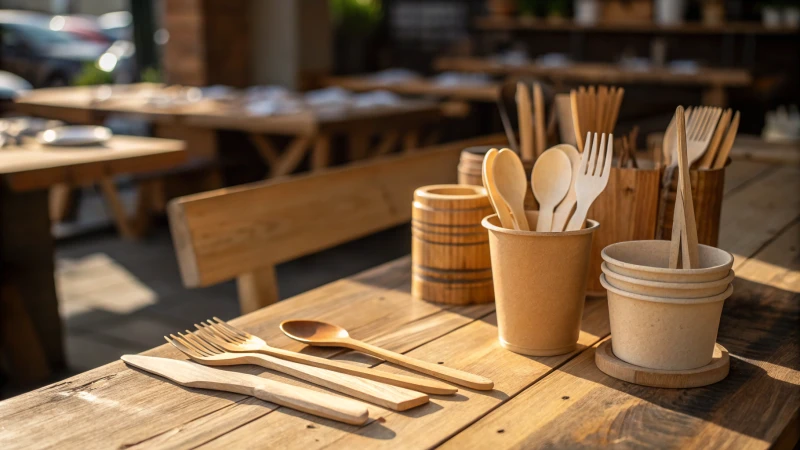
Have you ever wondered how something as simple as wooden cutlery can reflect diverse global tastes and preferences?
Disposable wooden cutlery sets offer a range of customization options like size, shape, finish, and branding to cater to various consumer preferences worldwide. For example, European markets favor 5-piece sets due to cultural dining habits, while Asian markets often prefer 3-piece sets, emphasizing practicality and environmental concerns.
I remember being captivated by how a simple wooden fork could embody cultural nuances. During a trip to Europe, I noticed the dinner table was always set with a complete array of utensils, reflecting their tradition of multi-course meals. It struck me how in Asia, the focus shifted towards functionality with fewer pieces, mirroring their quick-paced lifestyle.
Understanding these differences has been key in tailoring cutlery sets that not only meet practical needs but also resonate with local traditions and environmental values. Whether you're aiming to appeal to fast-food giants who prioritize efficiency or luxurious restaurants that value aesthetic and sustainability, recognizing these subtleties can guide you in making informed decisions that align with your sustainability goals.
European markets prefer 5-piece wooden cutlery sets.True
Cultural dining habits in Europe often require more utensils, favoring larger sets.
Asian markets favor 4-piece wooden cutlery sets.False
Asian markets generally prefer 3-piece sets due to simpler dining practices.
How Do Market Preferences Differ Across Regions?
Diving into the world of regional market preferences feels like embarking on a cultural adventure. It's like unlocking a treasure trove of diverse tastes and expectations across the globe.
Regional market preferences vary widely due to cultural nuances, economic situations, and consumer priorities. Businesses succeed by tailoring strategies to these factors, understanding local customs, and adapting communication styles for each audience.
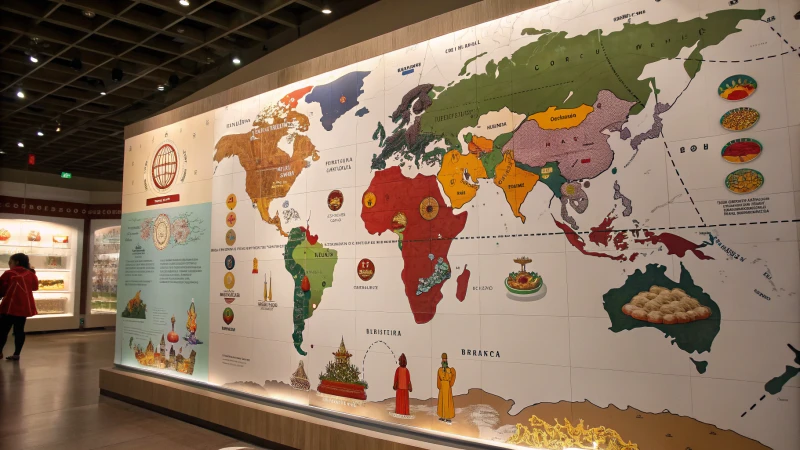
Cultural Influences on Market Preferences
Imagine standing in the middle of a bustling market in Asia. The energy is palpable, and every product tells a story of functionality and minimalism. I once found myself captivated by how much thought goes into a simple product design, like a 3-piece cutlery set1, which is cherished for its practicality. It made me appreciate how cultural values deeply influence what people buy.
Now, contrast that with my visit to Europe, where luxury reigns supreme. Here, a 5-piece cutlery set2 isn't just a utensil collection; it's a statement of completeness and sophistication. It's fascinating to see how these preferences reflect broader cultural ideals.
Economic Conditions and Consumer Needs
Economic landscapes can shift consumer desires dramatically. I remember chatting with a friend in North America who wouldn’t think twice about spending on premium brands, thanks to higher incomes and brand loyalty ingrained over time. But in regions where budgets are tighter, like some parts of Africa, the focus shifts to affordability and value. It's about finding that sweet spot where quality meets cost-effectiveness.
| Region | Economic Influence | Consumer Preference |
|---|---|---|
| North America | High income, brand loyalty | Premium products |
| Africa | Lower income, cost-conscious | Affordable essentials |
Adapting Marketing Strategies
Tailoring marketing strategies to fit each region is like fine-tuning an instrument to play harmoniously with local tastes. I’ve seen firsthand how digital marketing can thrive in tech-savvy regions with high internet penetration. Yet, in places where connectivity lags, traditional media still holds its ground.
Every time I research local purchasing habits3, it feels like piecing together a puzzle that reveals how people connect with products on a personal level. Understanding these dynamics has helped me craft campaigns that truly resonate with audiences around the world. By leveraging these insights, we can not only enhance our market positioning but also build stronger connections with diverse consumers.
Asian consumers prefer minimalist designs.True
Cultural influences in Asia favor practicality and functional designs.
Digital marketing is ineffective in high internet areas.False
Digital marketing is effective in regions with high internet penetration.
What customization options does Dragon Ball Xenoverse 2 offer?
Ever wonder how to make your Dragon Ball Xenoverse 2 experience truly your own? Customization is the magic key!
In Dragon Ball Xenoverse 2, players can personalize their gaming experience with diverse customization options for character appearance, skills, and equipment. These features can be unlocked through gameplay progression or by purchasing DLC packs, offering a tailored adventure.
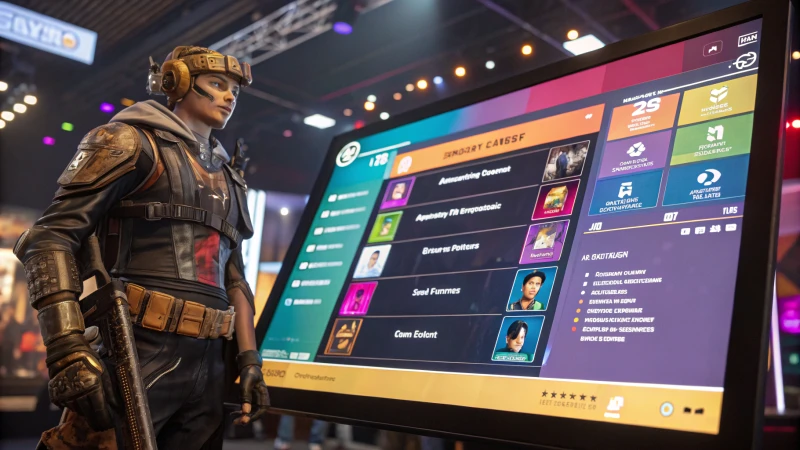
Character Appearance
I remember the first time I delved into Dragon Ball Xenoverse 2, spending what felt like hours tweaking my character's look. The game lets you choose from various races, each with unique characteristics. You can switch up hairstyles, clothing, and accessories to craft a character that feels just right for you. It's like having a blank canvas where your creativity can run wild. Check out more character appearance options4 if you're as detail-obsessed as I am.
Skills and Abilities
Beyond just looking cool, I love how the game lets you customize skills and abilities. Whether you're all about those high-impact combat moves or prefer strategic special attacks, the choices you make can totally change how you play the game. I've spent countless hours following guides on skill customization5 to get that perfect blend of power and strategy. And trust me, unlocking new skills—whether through progression or DLC—adds layers to the gameplay that keep it fresh.
Equipment and Gear
When it comes to equipment, it's not just about aesthetics—though who doesn't love a good armor set? Equipping your character with the right gear can significantly boost stats and enhance your performance in-game. I've learned so much from community forums about maximizing gear benefits, and it's amazing how a slight change in equipment can elevate your gameplay. For more insights into equipment benefits6, these forums are gold mines of strategy and advice.
| Feature | Options Available |
|---|---|
| Character Race | Saiyan, Namekian, Earthling |
| Hairstyles | Numerous styles and colors |
| Skills | Custom combat moves |
| Equipment | Armor, weapons, accessories |
Unlock Keys and DLC
Unlocking new customization avenues often involves getting those elusive unlock keys tied to DLC content. I can't tell you how exciting it feels when a new DLC drops and opens up fresh possibilities for personalization. It adds so much depth to the game, rewarding those of us who invest time exploring every customization path available. For an extensive list of unlock key requirements7, I recommend checking out online databases—they're a treasure trove for any dedicated player looking to enhance their Dragon Ball Xenoverse 2 journey.
Players can customize their character's race.True
Players choose from Saiyan, Namekian, or Earthling races.
Skills are only unlocked through DLC packs.False
Skills can be unlocked through gameplay progression and DLC.
How Can Branding Enhance the Appeal of Wooden Cutlery?
Wooden cutlery is not just about going green—it's about making a statement. But how does branding turn these eco-friendly utensils into a must-have item? Let’s dive into the world of branding and see how it transforms wooden cutlery into a symbol of sustainability.
Branding enhances wooden cutlery's appeal by spotlighting its sustainability, quality, and unique design. Effective strategies like storytelling and customized packaging connect with consumers, setting wooden cutlery apart from plastic options.
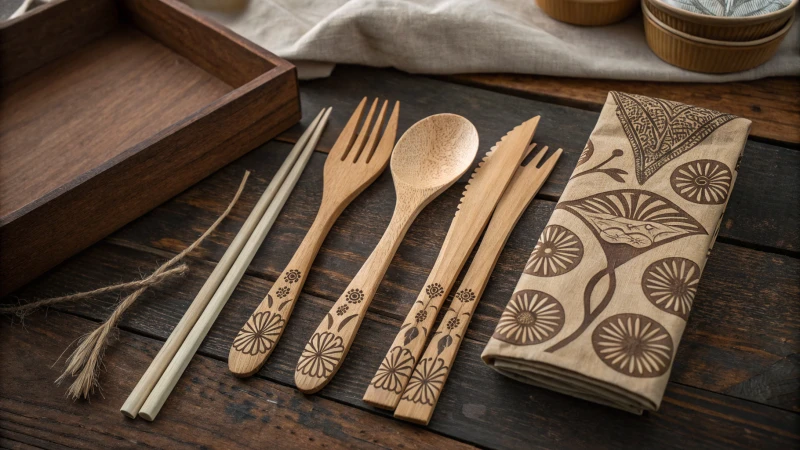
Highlighting Sustainability Through Storytelling
I remember when I first discovered the power of storytelling in branding—it was like turning on a light in a dim room. Just as I was captivated, so too can consumers be drawn to wooden cutlery when companies share engaging tales of sustainability. By painting a vivid picture of how these utensils help save our planet, brands can make an emotional connection that plastic alternatives simply can't. This narrative approach8 not only builds trust but also aligns perfectly with the values of environmentally conscious consumers.
Creating Unique and Aesthetic Packaging
Imagine browsing the aisles and stumbling upon a beautifully packaged set of wooden cutlery. It’s not just the product inside but the packaging that speaks volumes about what’s important to both you and the environment. I've found that when brands choose biodegradable materials and opt for simple, natural designs, it resonates with people like me who care deeply about sustainability. Here's a quick breakdown of what makes packaging stand out:
| Packaging Element | Description |
|---|---|
| Material | Biodegradable, eco-friendly |
| Design | Minimalistic, natural |
| Message | Highlights sustainability |
Leveraging Customization Options
The idea of having something uniquely mine has always appealed to me. Similarly, offering customized wooden cutlery can create that same sense of exclusivity for others. From engraving logos to adding unique patterns, personalization doesn’t just enhance appeal—it aligns perfectly with a brand’s identity. It’s like having your cake and eating it too, but in this case, you're making an environmental statement.
Engaging Consumers with Interactive Campaigns
I once participated in a "Design Your Cutlery" campaign, and it was such a fun and engaging experience! Brands can tap into this excitement by organizing design contests or eco-challenges. These initiatives do more than just promote products—they create a community around them, encouraging participation and fostering brand loyalty. It’s all about creating memorable experiences that resonate long after the contest ends.
Building Brand Reputation Through Certifications
When I see a product with certifications from reputable environmental bodies, it instantly boosts my confidence in its sustainability claims. For brands, obtaining these certifications can significantly enhance their reputation. Displaying them on packaging and marketing materials assures customers that they're making an eco-friendly choice. This certification strategy9 is crucial for winning over eco-conscious buyers.
Utilizing Social Media for Brand Advocacy
Social media is where I often discover new products, especially when they come with glowing testimonials or behind-the-scenes stories. By sharing content that highlights sustainable practices, brands can connect directly with their audience and reinforce their commitment to environmental responsibility. Encouraging consumers to share their experiences using branded hashtags can amplify reach and engagement, transforming satisfied customers into brand advocates.
Incorporating these strategies can transform wooden cutlery into more than just utensils—they become symbols of sustainability and quality in the eyes of consumers.
Brand storytelling can differentiate wooden cutlery.True
A compelling brand story emphasizing sustainability sets wooden cutlery apart from plastic alternatives.
Biodegradable packaging does not affect consumer decisions.False
Eco-friendly packaging influences purchasing by showcasing sustainability, appealing to conscious consumers.
What Are the Challenges in Sourcing Eco-Friendly Cutlery?
Ever thought about the journey of eco-friendly cutlery before it lands on your table? It's a labyrinth of challenges that demand both passion and precision.
Sourcing eco-friendly cutlery involves tackling hurdles like finding sustainable materials, ensuring environmental certifications, and overcoming logistical challenges, all requiring strategic planning and partnerships with trusted suppliers.
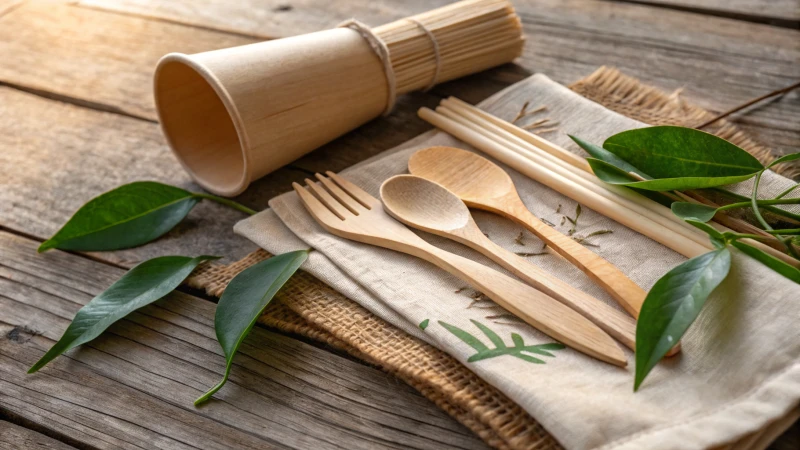
Material Sourcing Dilemmas
Diving into the world of eco-friendly cutlery, the first roadblock I hit was material sourcing. Imagine standing in a forest, trying to ensure every tree that's turned into wooden forks and knives is responsibly harvested. It's not as straightforward as it sounds. Wood is a classic choice, but only if it hails from certified, sustainably-managed forests. I remember a time when I had to double-check the FSC certification of a supplier. The thrill of finding bamboo as an alternative was quickly tempered by the intricate dance of verifying sustainable harvesting practices.
| Material | Advantages | Challenges |
|---|---|---|
| Wood | Renewable, sturdy | Requires certified sourcing |
| Bamboo | Fast-growing, eco-friendly | Harvesting practices need monitoring |
I learned to partner with suppliers who could provide clear proof of sustainability, often validated through certifications like FSC (Forest Stewardship Council) or PEFC (Programme for the Endorsement of Forest Certification). It was like finding a needle in a haystack, but once you do, the sense of accomplishment is unparalleled.
Certification and Compliance
Navigating certifications is another maze entirely. Eco-friendly products need to jump through hoops of environmental standards, ensuring they not only minimize impact but also comply with global regulations. I recall the frustration of aligning with European biodegradability standards – a rigorous process that can deter many suppliers. It felt like solving a puzzle but collaborating with suppliers who had already tackled these challenges made the journey smoother.
Logistical Considerations
But it doesn’t end there. The logistics of getting eco-friendly cutlery from supplier to table is fraught with challenges. Transport costs can soar due to the delicate handling required to maintain product integrity. And then there are global events that threaten to disrupt supply chains at any moment. I found that working with suppliers who offer robust supply chain10 solutions, including warehousing closer to the market and rapid distribution contingencies, was crucial.
Balancing Cost and Quality
And finally, striking the right balance between cost and quality feels like walking a tightrope. Eco-friendly alternatives are pricier than traditional plastics due to more complex production processes and higher raw material costs. But with growing consumer demand for sustainable options, finding a cost-effective solution is essential. I've seen businesses, from restaurants to hotels, improve their brand image through sustainable initiatives. They often find that investing in customizable options that reflect their brand aesthetics pays off in enhanced customer satisfaction and loyalty.
As a procurement officer, exploring partnerships with manufacturers who prioritize both cost efficiency11 and quality has been key to ensuring that eco-friendly cutlery becomes a viable option for large-scale adoption.
Wood cutlery is always sustainably sourced.False
Wood cutlery requires sourcing from certified forests, which isn't always guaranteed.
Bamboo grows faster than wood.True
Bamboo is a fast-growing plant, making it a more sustainable option.
Conclusion
Disposable wooden cutlery sets vary globally, with European markets favoring larger sets for tradition and Asian markets prioritizing practicality, reflecting cultural preferences and sustainability concerns.
-
This link provides insight into the cultural significance of completeness in European dining settings. ↩
-
This link provides insight into the cultural significance of completeness in European dining settings. ↩
-
Learn about common purchasing trends and consumer behavior in various Asian markets. ↩
-
Discover detailed character appearance customization possibilities in Xenoverse 2. ↩
-
Learn how to optimize your character's skills and abilities for better gameplay. ↩
-
Understand how different equipment affects your character's stats and performance. ↩
-
Find out how to obtain unlock keys through DLC for enhanced customization. ↩
-
Storytelling in branding creates emotional connections and differentiates products by highlighting values like sustainability. ↩
-
Environmental certifications boost brand credibility by assuring consumers of product sustainability, influencing purchasing decisions. ↩
-
Explore effective strategies for creating resilient supply chains, ensuring consistent availability of eco-friendly cutlery. ↩
-
Discover how companies manage expenses while maintaining high standards in sustainable product offerings. ↩

